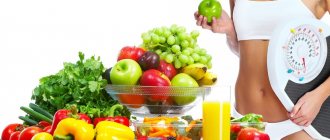The main feature of the nutrition of a 6-month-old child on artificial feeding is that his body is already adapted to artificial food, unlike infants. The formulas sold in stores are as close as possible to breast milk, but, nevertheless, they do not contain as many useful substances. Therefore, complementary feeding of bottle-fed babies begins quite early.
At around 4-5 months, doctors recommend introducing fruit juices. By six months, the diet of such children may already include ground vegetables and fruits, juices, and yolk.
What food can you give a six month old baby?
The selection of menus for children at this age is based on the physiological characteristics of their digestive system. Even if the mother really wants to treat the baby to something tasty, it is better to exercise caution and discuss the introduction of a new component with the pediatrician.
At six months, the digestive system is not yet strong, and heavy foods can cause upset or allergies. There are several products that can be safely given to a six-month-old baby:
- vegetables: it is advisable to start complementary feeding with them since they have a rather bland taste, and if you offer something more tasty, he is unlikely to want to eat them. Zucchini is a great place to start, but with potatoes it’s better to wait a little;
- fruits: you can give apples, apricots, pears, both juices and purees are suitable;
- porridge: it is better to choose ready-made gluten-free products, they do not require cooking and contain all the necessary nutrients;
- You can give your toddler soft cheese from dairy, but it’s advisable to wait a little with cottage cheese;
- meat: it is given in the form of broth or liquid, thoroughly ground gruel from beef, veal, turkey.
If your baby’s body reacts to a new food with loose stools, rashes or other alarming symptoms, you should refrain from eating such a product for at least two weeks. After this time, you can offer it again. If the negative reaction recurs, you should consult a doctor.
Is it possible to eat porridge?
Many people believe that at this age you can start eating cereal, and this is the right approach. But even here, pediatricians from different countries do not have a common opinion. For example, in the USA and some European countries it is believed that porridge should be gluten-free - this includes rice and corn. But in the Scandinavian countries, wellings are common. There they approach the issue of gluten content less strictly, and welling is most often oatmeal with milk, a very thin consistency that can be drunk from a bottle. Similar welling porridges, which can be diluted with milk or milk formula, can also be found on the domestic market - they are made not only from oatmeal, but also from other cereals. Such porridges are convenient for those who want to go on a picnic or walk with their baby - there is no need to take plates, bowls, saucepans and other utensils with them.
However, despite such a diversity of opinions, it is worth adhering to the recommendations approved by domestic pediatricians. Firstly, they generally comply with WHO requirements, and secondly, they are adapted to Russian reality. Thus, porridge is an allowed product, but it is given only when the child gets used to the first complementary foods, that is, vegetable puree.
What cereals can a child eat? Since gluten is not digested as well in children of this age as in adults, it is better to eat rice, corn or buckwheat. These cereals are rich in carbohydrates and various minerals. And buckwheat also contains a lot of iron, that is, it can provide the body with almost everything necessary.
It is believed that rice is digested better because it contains very little plant proteins. This is where they start, especially if the baby often has an upset stomach. If a child has constipation, then you should start with buckwheat porridge, since it is very nutritious and is also well digested. It is ideal for children with iron deficiency anemia. In any case, the second porridge will be corn porridge. If you prepare corn porridge not from flour or specially processed flakes, then it will take much longer to cook than rice or buckwheat.
So, all of the listed cereals can be eaten by a child at 6 months, but with one caveat. The fact is that rice should not be eaten by children suffering from constipation, it will only worsen the situation. As for oats, barley, wheat, they are very healthy, but they contain a lot of gluten, and if a child’s body produces little peptidase enzyme, then after he eats such porridge, he may experience abdominal pain, increased gas formation, and bloating , other painful or unpleasant symptoms.
Semolina porridge, which tastes good and is loved by many children, can be given to your baby around the time he turns one. Before this, there is no need to take risks, since semolina is made from wheat and contains a lot of gluten. In addition, semolina reduces the absorption of calcium, which increases the risk of rickets. But oatmeal can be given as early as 7 months. It contains more gluten than corn, but not by much. As soon as the mother is convinced that one or another cereal is well tolerated, she can combine several at once. For example, give a mixture of corn, rice and oatmeal. Moreover, ready-made mixtures of this kind are sold in stores.
The rules for introducing cereals are not much different from introducing vegetable complementary foods. To begin with, the porridge must be made more liquid so that it is better absorbed. This complementary feeding should be brought to the above volume of 150 g in at least a week, or even 10 days. All this time you need to watch how the child gets used to the new dish and whether rashes have appeared. It is recommended to give porridge in the morning for breakfast. Moreover, pediatricians advise sticking to this rule in the future, when the child is older, right up to elementary school, since at this time of day all the substances contained in it are absorbed most fully. You shouldn’t eat so many slow carbohydrates at night, as they take longer to digest. They start eating porridge from a bottle, but as it becomes thicker, they eat it from a spoon. You should choose the consistency that your child will like the most. Of course, there should be no lumps in the porridge under any circumstances, even if the baby already has teeth.
Changes to the menu
In six months, not only the diet changes, but also the toddler’s diet. The number of feedings is 5, the intervals between them are 3.5-4 hours. A formula-fed baby's 6-month regimen involves the following nutrition:
- 6:00 first feeding: mixture to which the baby is accustomed;
- 10:00 second breakfast: porridge prepared with diluted milk with the addition of a small amount of butter, pureed fruit;
- 14:00 lunch: vegetable soup or puree with vegetable oil, ½ yolk, fruit juice;
- 18:00 dinner: milk mixture cookies, fruit juice;
- 22:00 before bed: mixture, fruit puree.
This is just a sample menu; the diet depends entirely on individual perception. Be sure to maintain a time interval between feedings. This will help the digestive system work properly. Avoid offering snacks between meals to help maintain your appetite. Little by little, dairy dishes will be replaced by more mature dishes.
Water or fruit decoction should be given as a drink. The amount of liquid should be sufficient, especially in hot weather.
It is recommended to give complementary foods to the baby during the first and last meals. When adding a new component to your diet, you should not rush. It is better to give it before formula milk.
Remember that your main goal is to compensate for the possible lack of nutrients in the diet, and not to diversify the baby’s diet. This task will arise for you a little later.
Nutrition schedule for a six-month-old baby with artificial feeding
A six-month-old baby receives five main feedings at intervals of four hours during the day and eight hours at night. Be sure to follow your child’s daily routine so that his body prepares in advance for meals or going to bed. Then parents will not have problems feeding or putting the baby to sleep. An approximate nutritional plan for a six-month-old baby with artificial feeding is as follows.
First feeding: adapted milk formula or kefir.
Second feeding: milk porridge, butter, fruit puree.
Third feeding: vegetable puree, vegetable oil, yolk, or meat, fruit juice.
Fourth feeding: adapted milk formula, cottage cheese, cookies or crackers, fruit juice.
Fifth feeding: adapted milk formula or kefir.
As you can see, dairy dishes will gradually be replaced by fruit, vegetable and meat dishes. When feeding formula-fed babies, it is recommended to keep four hours between meals. Do not give any snacks so that the baby feels hungry and eats the food offered with appetite. Some children at this age require formula at night. If your child wakes up, do not deny your beloved baby bottles of formula.
General recommendations
It is necessary to introduce new food based on age indicators for introducing complementary foods. If you have difficulty understanding these rules, you should seek advice from a specialist.
Sometimes children at this age do not have enough iron, to compensate for its lack, it is necessary to give meat, and after some time - offal. In order for this microelement to be absorbed normally, you should not offer tea to your baby.
It is not advisable to offer cow's milk to such young children; it can disrupt the intestinal microflora and cause upset and pain in the abdomen.
Refrain from consuming various seasonings, sugar and salt. These components put extra stress on the kidneys and pancreas.
It is better to bake fruits in the oven, and steam vegetables until soft.
Prepare meals for your baby immediately before feeding, be sure to use the dishes fresh.
Do not try to force-feed your toddler, even if you are sure that this food is very healthy for him. In the future, he may refuse to eat. Eating should be a pleasure.
Unfamiliar food can be offered to the baby only when he is healthy and feeling well.
It is very important to consider the following rule: one unfamiliar product per week. Until one component is brought to the required volume, you should not add anything new. Thus, in a month, the menu of a six-month-old child can be replenished with four unfamiliar components.
Features of introducing complementary foods
To prevent the occurrence of allergic reactions, it is necessary to adhere to some rules for the sequential introduction of complementary foods.
It is important to choose vegetables and fruits without a strong taste. Children do not like unpleasant smells, sour or tart tastes, or excess salt or sugar.
Orange and red vegetables can also cause allergies. Therefore, they are introduced after green foods. And carrots are given only twice a week.
One daily serving for vegetables is no more than 100, and for fruits no more than 50 milliliters. These dishes need to be supplemented with cereals and protein foods.
Porridges are first prepared from only one grain – buckwheat or rice. The grains can then be mixed during cooking. When the little body gets used to this type of nutrition, you can use other cereals, introducing them one at a time and gradually. For example, oatmeal and corn grits will perfectly expand your diet.
You can prepare suitable cereal yourself using a coffee grinder. First, the cereal is mixed in a one-to-one ratio with water, and then during cooking you can add up to 100-120 ml of water. The main thing is to constantly stir and avoid the formation of lumps. However, a blender will help get rid of this drawback - it will turn the porridge into a homogeneous, tender mass.
The meat should first have a liquid and then a puree-like consistency. This product is difficult for children to swallow. Therefore, home-cooked meat should be thoroughly beaten in a blender.
Salt and sugar should be excluded from the menu or introduced in limited quantities.
It is better to introduce a new dish in the morning or at lunchtime. This way, the mother will have the opportunity to observe the reaction of the little body to complementary foods.
Recipes
For a six-month-old bottle-fed baby, the simplest recipes are suitable. We offer you several options.
Roasted beet puree
You need to take one small medium-sized beet, wash it well, preferably using a metal brush for this. Wipe dry, wrap in foil, make several holes in the foil to allow steam to escape. Baking time is about two hours at a temperature of 200 degrees. Cool and peel the finished beets. Grate the product on a coarse grater or make a homogeneous mass using a blender. Dilute the resulting slurry with water until it becomes semi-liquid.
After the baby’s body gets used to one-ingredient puree, you can prepare it with the addition of other vegetables.
Rice porrige
White rice is very suitable for feeding six months old babies. To prepare delicious rice porridge you will need:
- half a cup of water;
- 40 grams of rice;
- 60 ml milk formula
- How to cook:
Boil water in a saucepan. Pour rice into boiling water, stirring gently. Cook over low heat for about 10 minutes, remembering to stir. After turning off the rice, cool slightly, then put it in a blender. Beat until smooth, add milk to desired thickness.
Introduction of complementary foods
Always listen to your baby. If some product makes him hysterical and completely refuse to eat, do not force him to swallow the hated portion. Complementary foods are introduced into the usual diet gradually. For example, introduce your child to zucchini puree within 1 week (start with one teaspoon). When the serving volume increases to 80-100 ml, add a spoonful of another vegetable puree to the zucchini puree. If a child has a food allergy, it is best to give him green or white vegetables (for example, cabbage, zucchini, peas or potatoes). You can feed children with special vegetable mixtures, which are sold in baby food departments.
You can start expanding your menu not only with vegetables, but also with cereals. This is advised to do if a 6-month-old baby is underweight or suffers from regurgitation.
Gluten-free cereals are ideal for first feeding. These include:
- buckwheat;
- corn;
- rice
Industrially produced porridges are prepared from environmentally friendly products, so they should be given preference. In addition, they are enriched with essential vitamins and microelements needed by a bottle-fed baby. They contain milk powder, so it is enough to dilute the mixture with warm water. Cow's milk should not be used for making porridge for up to 8 months. It is advisable to use breast milk, special formula or water.
The first porridge should resemble milk and pour from a spoon. To prepare it you need to take 5 grams of the mixture and 100 ml of liquid. Gradually you can make the consistency thicker. To diversify the diet of a 6-month-old baby, you can add a little butter or 10 grams of chopped boiled egg yolk to the porridge. Upon reaching 8 months, the range of cereals can be expanded.
How to introduce new foods into your child's diet
Regardless of what complementary foods are prepared from, there are general rules for introducing them into the baby’s menu.
Important! The main rule is that any complementary foods should be exclusively in the form of purees.
Food that is new to the child should be offered to him before his usual milk and certainly warm. And you should start with a small portion of a maximum of half a teaspoon, gradually increasing it slightly until the amount of complementary foods reaches the norm within two weeks. The next type of product is introduced at a faster pace - within a week, or even five days.
But in no case should you mix different products in the same portion, as this may interfere with determining the source of a possible allergic reaction. It is most convenient to start introducing a new type of food in the first half of the day, since it is easier to deal with possible allergies during the daytime. If the baby is underweight, it is better to start complementary feeding with cereals, and for babies who are prone to constipation, vegetable foods would be an ideal option.
What can you feed a 6 month old baby?
Pediatricians and nutritionists have long ago clearly identified those products that are most suitable for preparing complementary foods for six-month-old children.
Learn how to make healthy purees from pumpkin, potatoes, carrots, pears, zucchini, apples and cauliflower.
Vegetable puree
The best vegetables that best meet the requirements for first feeding are cauliflower and zucchini. Then the menu can be gradually expanded with carrots, beets, potatoes, onions and pumpkin. The last of these vegetables is especially valuable for its set of B vitamins, vitamins D and E, as well as minerals in the form of magnesium, calcium, potassium and iron.
Pumpkin is a wonderful preventative against rickets and anemia; in addition, its use ensures that babies will not be constipated. Vegetables must be steamed or boiled, and then pureed using a blender. You can give six-month-old babies vegetable soups, but they also need to be offered to children in the form of purees.
Porridge
The leaders in the initial bait menu are rightfully considered to be buckwheat, rice and corn porridges, which are gluten-free, but filled with vitamins, amino acids, micro- and macroelements. Buckwheat porridge is especially valuable, which is considered almost ideal for children due to its good digestibility, nutritional value and mass of useful substances.
Find out what to feed your 7 month old baby.
Actually, porridges made from almost all popular cereals are suitable for complementary feeding, with the exception of millet and pearl barley, which are difficult for a child’s body to digest. The famous semolina porridge is recommended for underweight children, however, apart from the abundance of carbohydrates, it cannot boast of anything particularly useful. Oatmeal, rich in phosphorus, iron and many other nutrients, is good for children.
To prepare porridge, you must first turn the cereal into powder using a blender. The porridge is cooked in water; with milk it will only be available to babies from eight months of age. Children who were artificially fed with formula milk and were introduced to porridge before their infant peers could add pureed apples or peaches to the last meal. Porridges consisting of several types of cereals and thoroughly mashed boiled rabbit meat are also suitable for them.
Video: how to cook buckwheat porridge for babies from 6 months
Did you know? In Ancient Egypt and Babylon, children were weaned quite late - at the age of three.
Fruits and juices
Despite all the usefulness of fruits, you should not get carried away with them when preparing complementary foods, since the sugars contained in fruits can cause the baby to get used to their taste and kill the appetite for products that are more neutral in terms of sweetness. However, you should never give up fruit. A reasonable balance is needed here. Apples, which rarely cause allergic reactions, are most in demand when preparing complementary foods.
It is useful to find out what a child should be able to do at 6 months.
Bananas and pears are also good. All of them are brought to the consistency of puree at home or purchased in a retail chain in a canned state. Juices are also good for babies. It is best if they are home-cooked and not store-bought. And here apples have proven themselves best, from which the safest juice is obtained in terms of allergenicity. It is necessary to start giving juice to babies using a pipette in the amount of just a couple of drops per day.
Plum, carrot and pumpkin juices, rosehip decoction and sugar-free compotes are also useful. You should take juices half an hour before meals or the same amount after. True, many modern pediatricians have come to the conclusion that children under one year of age do not need juices at all. They say that they overload the pancreas, and besides, the sugar in juices has a harmful effect on fragile baby teeth.
Important! It is strictly not recommended to drink anything while the child is eating in order to avoid problems with its digestion.
How much should a baby eat per day?
It is extremely reckless to reproach an artificial child on demand. Feeding with an adapted formula requires a regimen and proportions . A baby aged six months who is developing normally and gaining weight on schedule should consume approximately a liter of food per day. This is the total volume of mixtures, complementary foods, juice, tea and water.
Doctor Komarovsky's opinion
Evgeny Olegovich Komarovsky believes that only natural mother’s milk is a universal food for a child. However, if breastfeeding cannot be established, it is best to choose a high-quality adapted formula. It is best to feed your baby formula or your own milk for up to one year.
Complementary feeding, according to a well-known pediatrician, is best introduced no earlier than the baby turns 6 months old. It is the responsibility of parents to make the transition from baby food to adult food as safe as possible. Therefore, you should introduce your baby to new products carefully so as not to cause allergic reactions.
Attention! Allergens (bright fruits, dried fruits, exotic foods) should be avoided. An ideal option would be soft vegetables, dairy products and cereals.
In addition to age, there are other signs that indicate that the baby is ready for complementary feeding:
- the child has doubled his weight since birth;
- the baby sits independently and holds his head;
- the child’s tongue should not make reflexive pushing movements;
- The baby should be interested in the newly offered food.
It's best to start with one teaspoon of a new food , and gradually increase the dose.
After the child was 9-10 months old, one meal should have been replaced with adult food. He should try vegetable purees, cereals, fruits and meat. If your baby has not yet shown interest in food, there is no need to worry. This means that the time to move to the adult table has not yet come.
Where to start the first feeding
Children fed with breast milk approach their six-month anniversary, as a rule, as harmoniously developed babies, which is facilitated by mother's milk specially intended for this purpose by nature. However, during this period, a certain disproportion arises: the mother’s milk is already somewhat losing its nutritional qualities, and the growing child’s body, on the contrary, requires an increase in the supply of nutrients from the outside for its further full development.
Did you know? Breast milk can change color depending on the foods a woman eats: large amounts of carrots and pumpkin will make it yellow or even orange, and green vegetables will turn it green.
That is, the time inevitably comes for the first complementary feeding, which, according to experts, is optimal precisely at six months of age. Those same babies who, for various reasons, were forced to be content with artificial feeding with formula milk, are introduced to complementary feeding earlier than their breastfeeding peers, however, for them, the age of six months becomes a turning point, in terms of a significant change in their diet.
Menu option for a 2 year old child
By the age of two, a child can eat almost anything. The diet should include a sufficient amount of healthy carbohydrates (cereals), animal protein (meat), animal fats (butter) and vegetable (sunflower, olive oil) origin. Fermented milk products occupy a special place in the diet. Fish (preferably sea) should be given about twice a week. Vegetables and fruits are a source of vitamins and fiber, so they are needed in large quantities.
On a note! The restriction applies to white cabbage, since it tends to cause fermentation in the intestines.
Meals for a week for children two years old are presented in the table below.
| Monday | Breakfast | Dairy dish, fruit, tea |
| Dinner | Soup, steam cutlets, pasta, dried fruit compote | |
| Afternoon snack | Cottage cheese casserole, compote | |
| Dinner | Cheesecakes with sour cream, fermented baked milk | |
| Tuesday | Breakfast | Rice with vegetables, compote |
| Dinner | Meatball soup, boiled fish, pear | |
| Afternoon snack | Milk with cookies | |
| Dinner | Lazy dumplings with cottage cheese, tea | |
| Wednesday | Breakfast | Milk dish, butter sandwich, tea |
| Dinner | Rabbit soup, fish with mashed potatoes, salad, juice | |
| Afternoon snack | Fruits, kefir | |
| Dinner | Pasta with meatballs, tea | |
| Thursday | Breakfast | Oatmeal with milk, apple, compote |
| Dinner | Fish soup, boiled buckwheat, meat soufflé, tea | |
| Afternoon snack | Cheesecakes with sour cream, juice | |
| Dinner | Pilaf, kefir | |
| Friday | Breakfast | Buckwheat with butter, tea |
| Dinner | Cabbage soup, steamed cutlets, fruit, tea | |
| Afternoon snack | Cottage cheese with raisins, juice | |
| Dinner | Omelette, kefir | |
| Saturday | Breakfast | Chicken soufflé, oatmeal, compote |
| Dinner | Soup, salad, boiled meat, juice | |
| Afternoon snack | Banana, kefir | |
| Dinner | Vermicelli with milk, bun | |
| Sunday | Breakfast | Semolina porridge with milk, sandwich with butter |
| Dinner | Borscht on the bones, salad, liver, juice | |
| Afternoon snack | Milk with bun, apple | |
| Dinner | Boiled fish, salad, yogurt |











